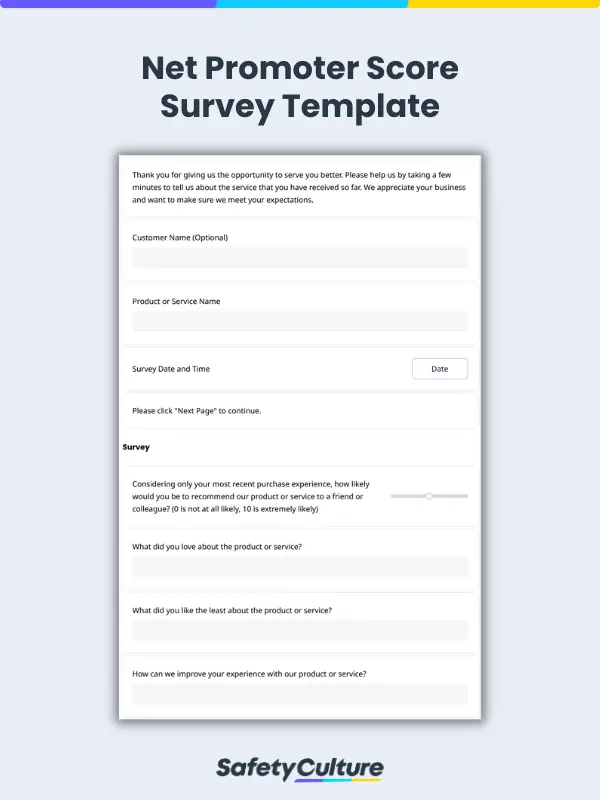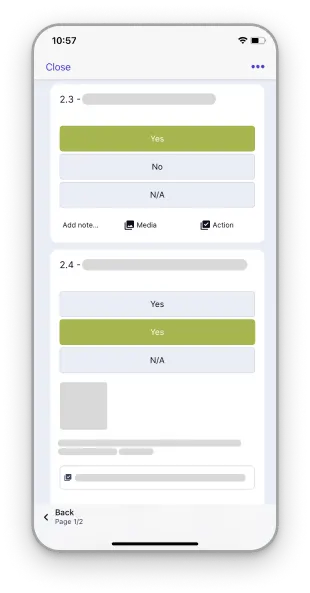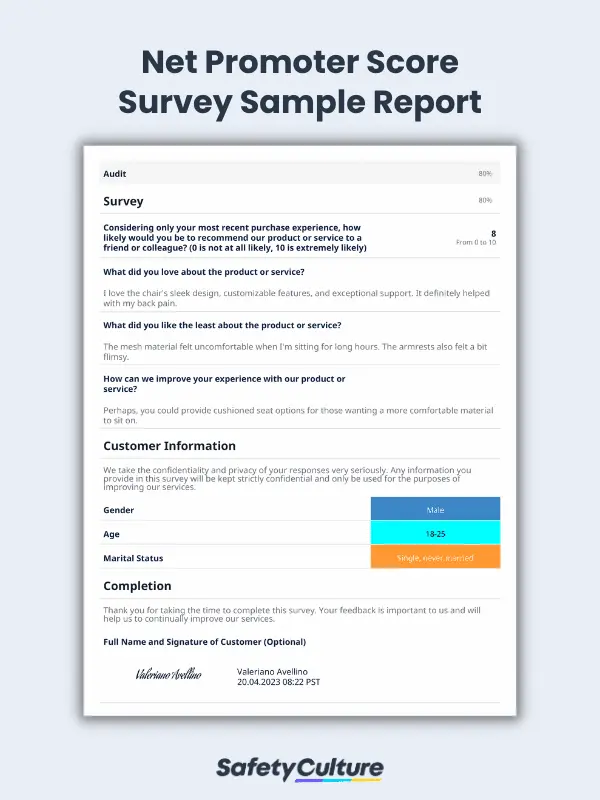What is a Net Promoter Score Survey?
A Net Promoter Score (NPS) survey is a standardized method of gauging customer loyalty and satisfaction based on specific score-based and open-ended questions. In its most basic form, it will ask customers to rate, on a scale of 0 to 10, how likely they will recommend your product or service to others. The survey results allow you to get a pulse of your customers based on their perception and level of satisfaction with your business offering.
Why is it Important for Your Business?
Net promoter score surveys are an essential tool that companies can use to hear feedback directly from customers. But how exactly can they help your business?
First, they provide insight into customer loyalty and satisfaction levels. The results from the survey show how many people are likely to recommend a product, service, or company to others and become repeat customers. Teams can leverage this data to develop strategies for retaining loyal customers and engaging passive users.
Additionally, NPS surveys provide valuable feedback on areas that require improvement. If customers are not satisfied with a particular aspect of a product or service, the business can take steps to address the issue and improve customer satisfaction.
Lastly, these scores can be used to measure a company’s performance against competitors. By comparing their scores with those of competitors, businesses can identify areas where they are falling behind and take steps to improve their performance.
Types of NPS Survey Questions
An NPS survey typically uses a combination of the following query types for a comprehensive overview of customer feedback on the products and services they offer:
Main NPS Questions
Score-based questions, also called NPS questions, often observe a 0-10 rating scale, with 1 as the lowest and 10 as the highest score. These can capture the overall brand experience or rate specific aspects, such as customer service and product quality. Below are a few examples:
- How likely will you recommend [Product X/Service Y] to a friend or colleague?
- Considering only your most recent purchase experience, how likely will you recommend [Product X/Service Y] to a friend or colleague?
- Considering only your complete experience with [Company Z], how likely will you recommend the company to a friend or colleague?
Follow-Up Questions
Meanwhile, open-ended questions allow customers to explain the reason behind the score they gave. Businesses can leverage these valuable insights to improve their products and services. Here are some follow-up questions to add to your NPS survey:
- Can you please explain the reason for your rating?
- What did you like the most/least about the product or service?
- How often do you use the product or service, and how does it fit into your daily routine?
- Are there any particular features or services that stand out to you?
- How can we improve your experience with our product or service?
What to Include in This Template
NPS surveys are typically brief, but their length and content may vary on factors, such as the product or service being reviewed and the information needed by the organization. At its most basic form, an NPS survey template should cover the following sections:
Introduction
Begin the template with a welcoming note to the customer filling out the survey. You can also add a field to write their name, the product or service they’re reviewing, and the date and time of the survey. Make sure to tag the “Customer Name” field as optional for those who want to leave anonymous feedback.
Survey Proper
Given the straightforward nature of NPS forms, the survey proper comes immediately after the introductory page. It typically consists of score-based and open-ended questions to accurately gauge satisfaction levels and identify pain points in the customer experience.
Customer Information
To further segment customer information for analysis, a section in the template can be placed for demographic data, such as gender, age, and marital status. Adding a confidentiality notice can also help assure customers that the data they will provide will be kept private and used for the intended purpose(s) only.
Completion
Lastly, wrap up the NPS survey template with a space for customers to sign off on the form. This section also allows companies to thank the customer for giving honest feedback via the survey.
Best Practices in Creating and Using NPS Survey Templates
After learning the components and questions to include in an NPS survey template, you’re now ready to make one for your business. But before you start, here are 5 tips to help you make the most out of your NPS survey:
- Define your objectives – Before creating the survey, determine what you want to gauge, what information you’re seeking, and how you’ll use the data obtained.
- Keep it short and simple – It’s best to simply provide one primary question (usually the NPS or score-based question) and a few follow-up questions to give additional context. Keep in mind that the survey should be completed within minutes.
- Use the right language – When writing survey questions, think of the customers who’ll be filling them out. As much as possible, use simple and straightforward language while avoiding technical jargon and complex sentences.
- Consider the channel – Determine the most appropriate platform to deploy your NPS survey. Make sure that it’s one that your customers are likely to engage with, may it be through email or social media.
- Choose the best timing – Be sure to send out your NPS survey in a timely manner based on the objectives initially set. In most cases, it’s best to obtain feedback when a customer’s experience with the business is still fresh in their mind.
Here’s a sample NPS survey report when completed using a digital tool:
FAQs about Net Promoter Score Surveys
An NPS survey can be classified into two types: relational and transactional. Relational NPS surveys focus on the overall customer experience with a brand, product, or service. On the other hand, transactional NPS surveys account for specific interactions, thereby providing customer satisfaction data at a granular level.
In general, it’s recommended to conduct NPS surveys on a regular basis to track changes in customer satisfaction and loyalty over time. Holding them quarterly or bi-annually is a good starting point, but if you’re operating in a fast-paced industry, it’s best to give out NPS on a monthly or even weekly rotation.
NPS and Likert scales are popular survey tools for measuring customer satisfaction and brand perception, but some fundamental differences exist between the two.
NPS surveys target a specific question—the likelihood of recommending a product or service to others—with some follow-up questions for further context. Meanwhile, the Likert scale gauges the strength of opinions or attitudes towards a particular statement about the product or service through multiple scale-based questions.




